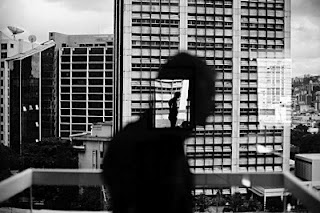Cindy Sherman is an American photographer and film director, best known for her conceptual portraits. Through numerous series' of work, cindy has always challenged her audience to question their initial thoughts and reactions to everything they forget to give a second thought to. It's by looking at her brilliant photographs, that we dig deeper into our minds and realize how quickly we create stories to her photos that have no real prologue to them, and where we got our ideas from. But that of course, was her artistic intention all along. I love this women, but I love her work even more.
Her famous series of work, titled (but in a sense, not) "Untitled Film Stills", she is drawn out as a feminist, whether she assumes the label or not. What makes this series so brilliant, is the same reason why I chose Cindy as my mentor. In this collection of 69 black and white photographs, we see movie stills, from movies that in fact don't exist, and never have. That being said, we're convinced we've seen these in movies, because the photographs are inspired from 1950's and 60's film noir and European art house films.
Cindy Sherman wanted to get this idea across to her audience. She wanted people to question what they were looking at. I think, and proably so did CIndy, that we don't question our pre-assumed notions quite often. We are a combined effort of everything we've ever seen, felt, or heard. Each photograph is an apparent moment from a bigger, implied narrative. However, this implied narrative is both the viewer's, and Cindy's creation. Our preconceptions are based on what we have learned from female roles in pop culture. Based on our experiences of what women are like in movies, and the stereotypes that followed women in the 50's and 60's, we have unknowingly absorbed signs and imagery of popular culture that affects our judgement of what is real. Cindy wanted to force the viewer into coming up with their own interpretation by the fact that she left everything untitled. She ideally wanted people to question whatever preconceived notions they made have about a particular scenerio, about a character. She challenged us to think outside of what movie culture has molded our judgements into.
Using cinematic techniques like lighting, scenery, props, framing, and leaving the images untitled and unnumbered, just as a promotional movie still would be, the notion of informed movie culture is reinforced.
In the photo I took in which I mimicked Cindy's artistic intent, I wanted to challenge my audience to find a story of their own. While she tackled the 50's and 60's, I wanted to incorporate our generation of 2000-2012 into my photo, while maintaining the movie feel. I want you to break out of your pre-consumed notions and find a story of your own to feed this photo. I found my inspiration through this world renowned photographer, and that's why I love Cindy Sherman.








.jpg)















